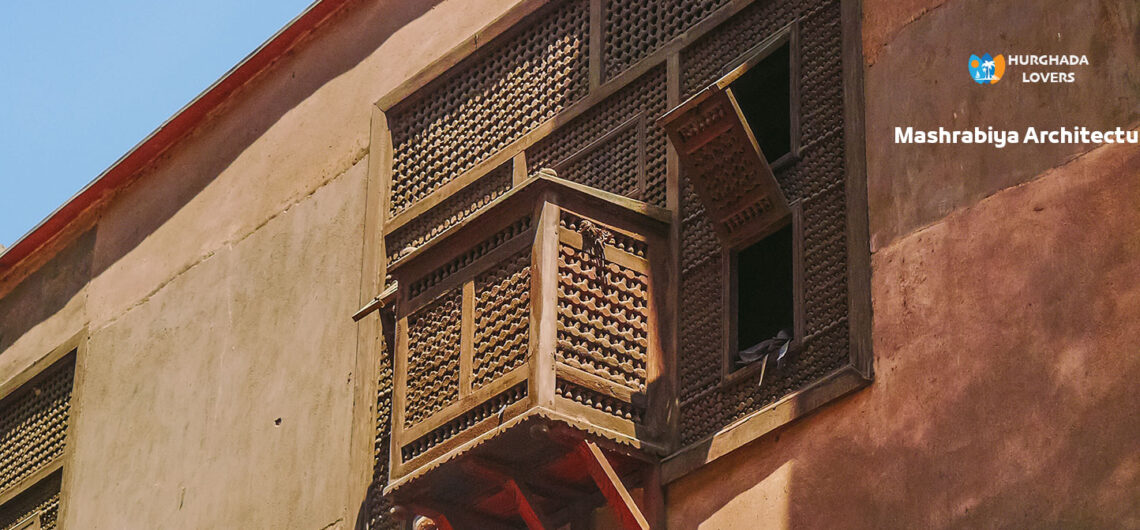Mashrabiya Architecture in Islamic Egypt History | Facts Islamic Period Art & Mashrabiyya in House traditional architecture Design and more…
The Art of Mashrabiya or Shanasheel in the Islamic Civilization of Egypt | Discover the facts and history of mashrabiya arts or chanachilat, stained glass architecture in the Mamluk era in Old Cairo, and more.
Hurghada lovers Offer Luxury Hurghada to Pyramids Tours | El Gouna to Pyramids Tours | Makadi bay to Pyramids Tours | Sahl Hasheesh to Pyramids Tours | Soma bay to Pyramids Tours .
Mashrabiya Architecture
The history of the development of mashrabiya arts in the Islamic civilization of Egypt. Valuable information about the stages of using wood in the art of decoration and the manufacture of wooden windows and windows in the Islamic era.
The art of mashrabiya spread to all the wooden windows in the houses of ancient Egypt, and reliance on the art of stained glass with plaster began to obtain a poetic atmosphere after the passage of light through it to give different solutions, in addition to interest in developing the art of Arabic calligraphy for writing on balconies, wooden and iron doors, home furniture and mosque pulpits
The art of the mashrabiya or the art of the chanchol began in the sixth century AH in the Abbasid era in Egypt and is still used to decorate houses and palaces.
The mashrabiya is made of wood with various engravings, drawings, and decorations on each side, in addition to stained glass or stained glass.
Mashrabiya is used to avoid sunlight and reduce temperatures in summer, while increasing temperatures in winter, to make the room feel warm, in addition to defining the passage of light into the room in a romantic way, according to the shape of the decorations and stained glass.
It is also used to reduce the humidity in the air and reduce the passage of air into the room.
The art of Mashrabiya developed as it spread in all Arab countries such as Iraq, Lebanon, Saudi Arabia and the rest of the Arab countries, and it varies according to the type of wood used, the artistic style and the worker specialized in designing the decorations of the Mashrabiya.
The word “mashrabiya” is derived from the word “drinking” or “drinking place”, in which pottery pots were placed to preserve and cool water as a result of the passage of air through the openings of the mashrabiya in a distinctive geometric way that allows the water to be cooled in the summer.
stained glass art
The history of the development of the stages of using stained glass arts to form the Islamic civilization of Egypt. Information on the stages of using stained glass types in Islamic architecture, windows, gypsum and more.
The ancient Egyptians were or made of glass, and ornamental tools, beads and amulets made of glass were found for more than 400 years BC.
The most important thing related to the art of stained glass in Islamic architecture are the moonlights and sunshades that are found in mosques with window openings and shrines, especially at the neck of the dome, where there are stained glass lamps to illuminate the place.
You find the art of stained glass in the Ahmed Ibn Tulun Mosque above every pillar on which the large arches rest.
You also find stained glass with stucco in the Fatimid era in the Al-Hakim Mosque, especially the presence of plant motifs, and in the Al-Saleh Tala’a bin Razik Mosque, where motifs were used to fill the space of the windows with the colors of the stucco-stained glass.
You also find stained glass in the Ayyubid era, which is found in the shrine of Al-Saleh Najm Al-Din Ayoub and the dome of Imam Al-Shafi’i, where the design of the dome and the shrine contains openings with windows of stucco. You can also visit the Museum of Islamic Art in Cairo to see a group of ancient windows that contain the art and decorations of stained glass .
You can find stained glass in the Mamluk era in Al-Zahir Baybars Mosque, in addition to the development of decorations in it, where windows were designed from hollow stones with a frame of securitization, Kufic writing line, and adjacent star geometric shapes, such as those found in the windows of Al-Nasir Muhammad Mosque in Salah al-Din Al-Ayyubi Citadel.
The collection of Sultan Qalawun contains geometric decorations in the stained glass windows with stucco, in addition to those in the University of Salah al-Din al-Ayyubi Citadel, the Sultan Hassan School, the Tanbagh al-Mardani Mosque, al-Muayyad Mosque, and al-Nasir Muhammad Mosque.
We will also find the art of stucco glass in the Mamluk era in the Burji Mamluk school, in the school of Jawhar al-Qanquba’i, Khanqa Shaykhun, the school of Inal al-Yousifi, the Barquq group in the study, and the Sultan Barquq group in al-Mu’izz and al-Ashraf Barsa’i.
The kings in the Ottoman era took care of this art, and we will find it in an advanced way in the Mahmoudia and Al-Rifai mosques, the Al-Bardini mosque, the Queen Safiyya mosque, in addition to the Muhammad Ali Pasha mosque in Salah al-Din Citadel.
We will also find it in the house of Al-Suhaimi, the house of Zebin Khaut, the Saray of the traveler, Khana in Al-Gamalia, and the house of Al-Harawi, in addition to the Saray Al-Manial Museum, which was built by Sultan Muhammad Ali, which is characterized by the presence of a group of window openings made of stained glass with stucco or combined with arabesque wood, the art of the mashrabiya.


